
CIENA booth 2523 & SURF booth 3421
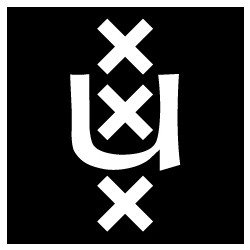
| SURF Camera 1 | SURF Camera 2 | CIENA Camera 3 | CIENA Camera 4 |
|
|
|
|
|
|
|
|
|
|
|
|
|
|
SC2016 Workshop and Technical program presentations & involvement by UvA group members.
|
Demo's
|
| SARNET | SARNET | SARNET - video | |
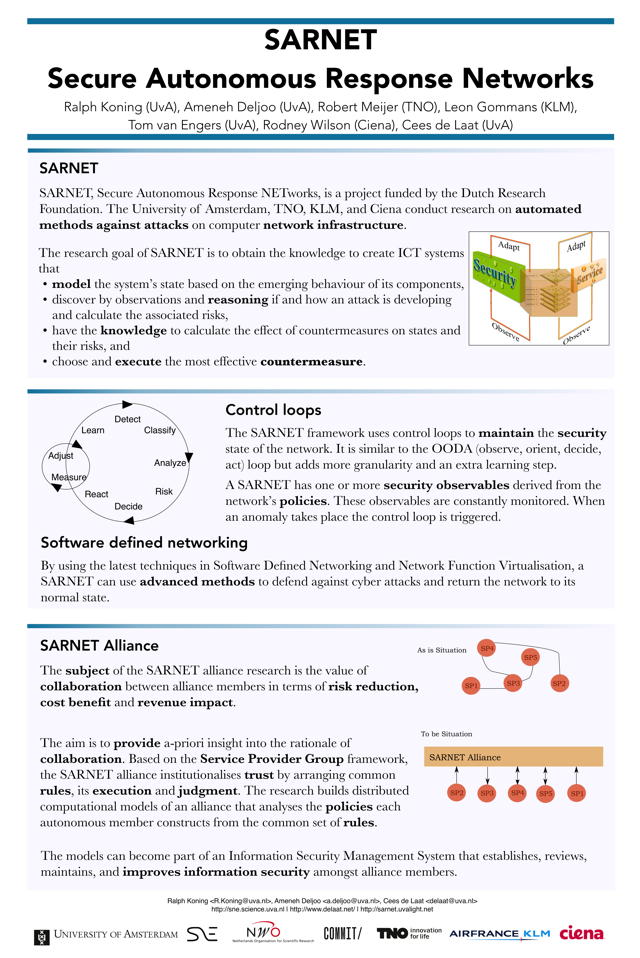
|
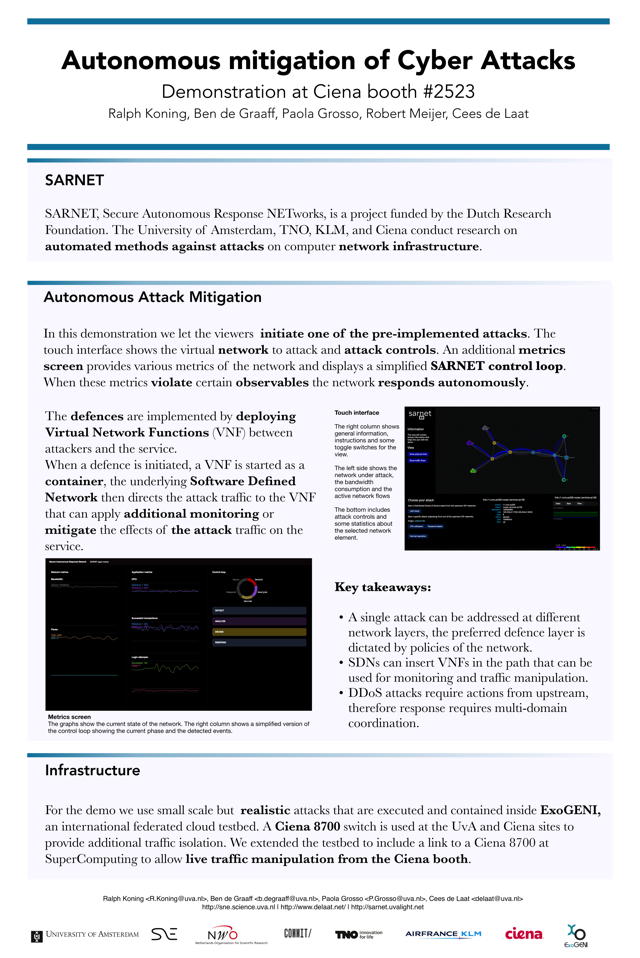
|
||
| SARNET | SARNET | SARNET - video | |

|
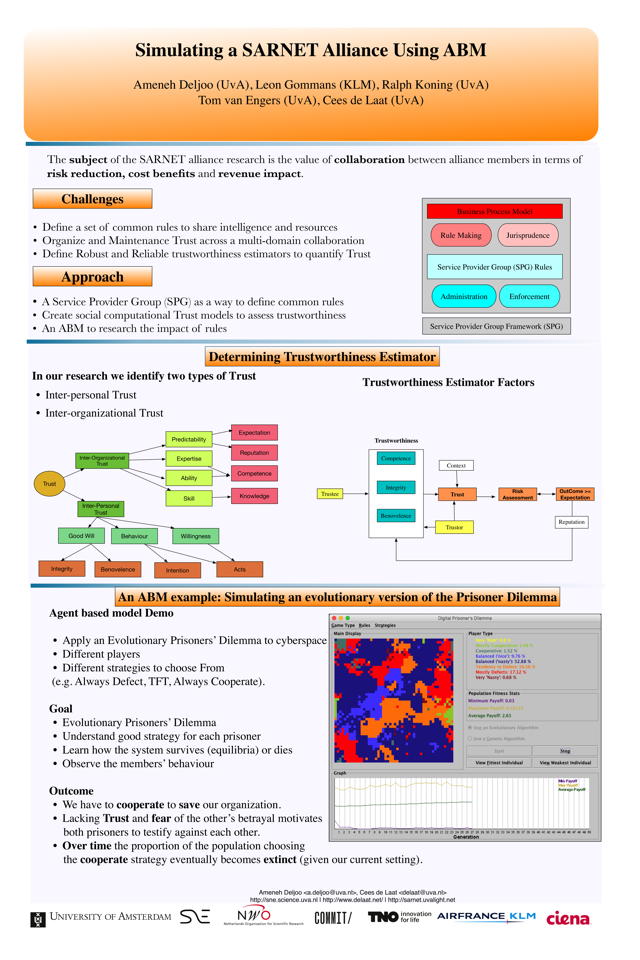
|
||
| video | |||
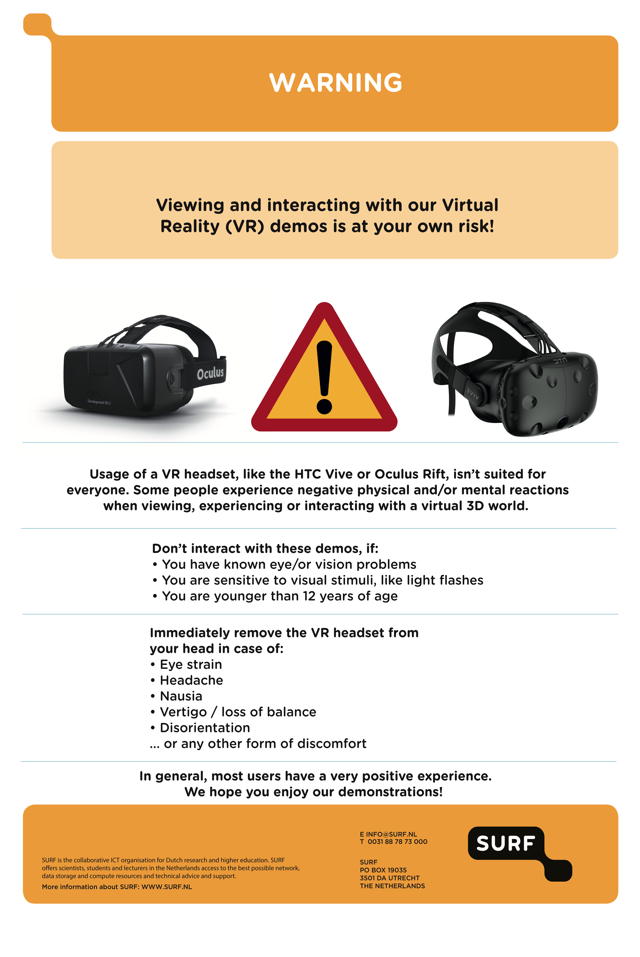
|
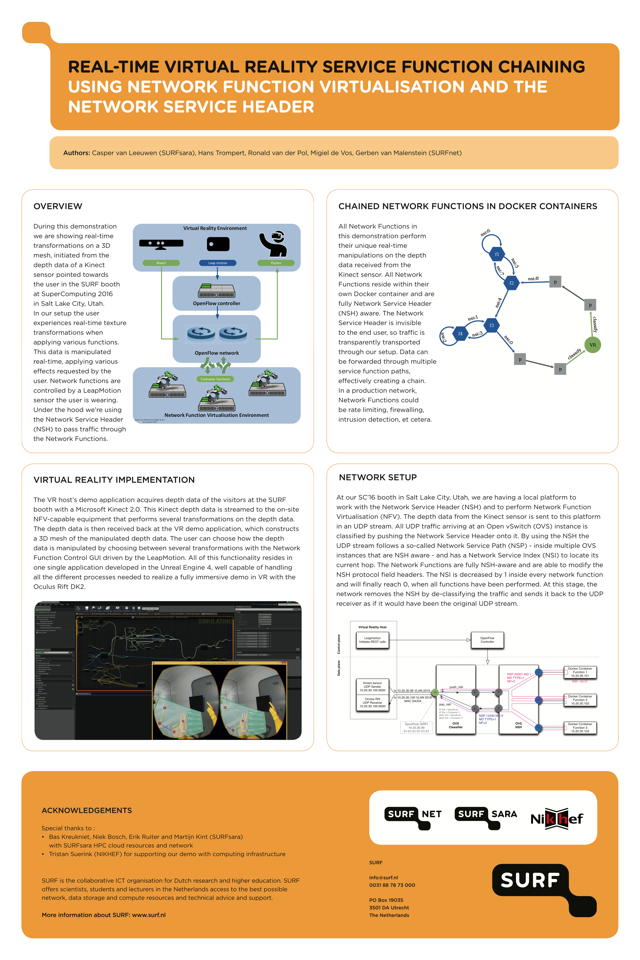
|
||
| BluePlanet @ CIENA booth | DockerMon |
DockerMon: Bring your own container - video | |
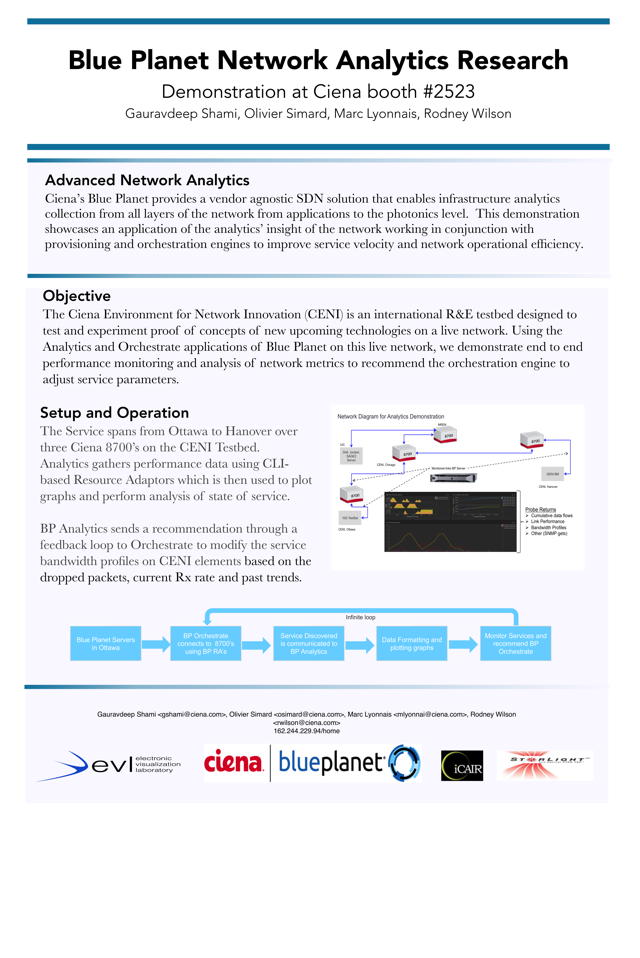
|
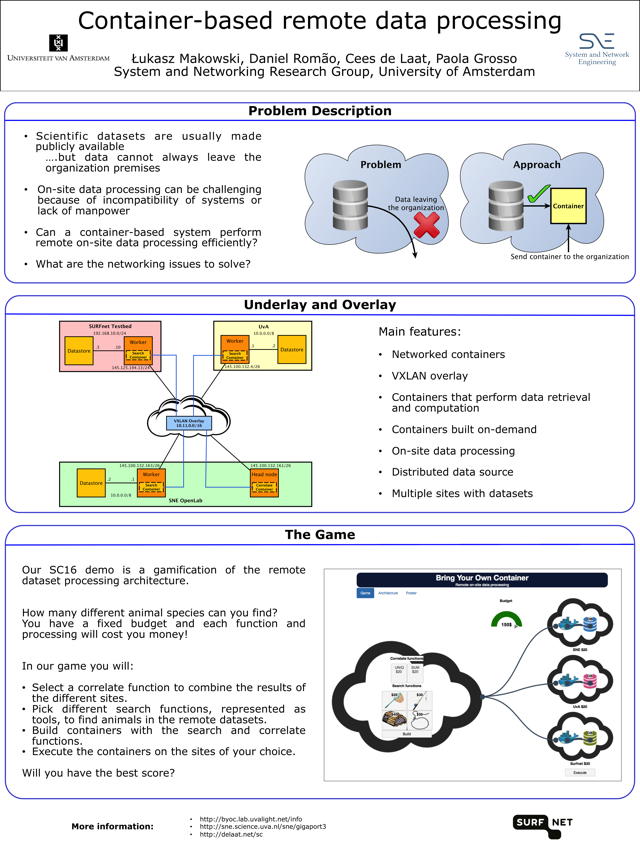
|
||
| SWITCH | SWITCH |
SURFSARA Open Source |
|
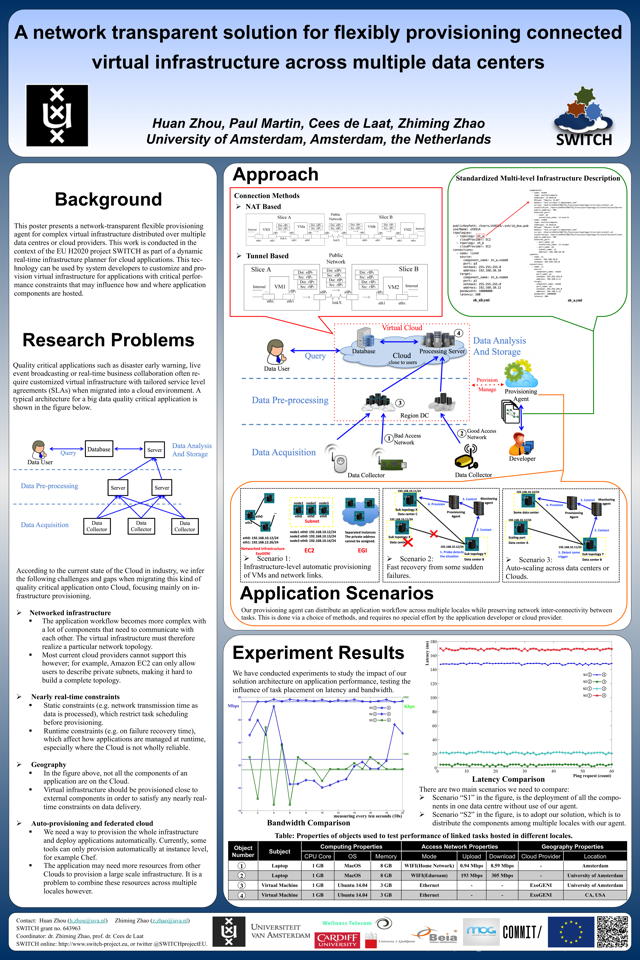
|
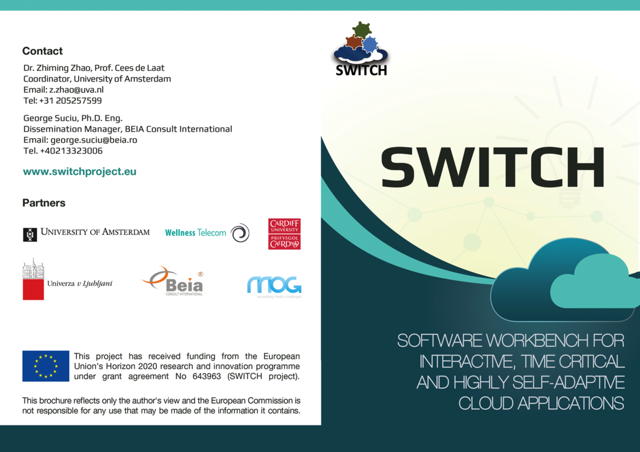 
|
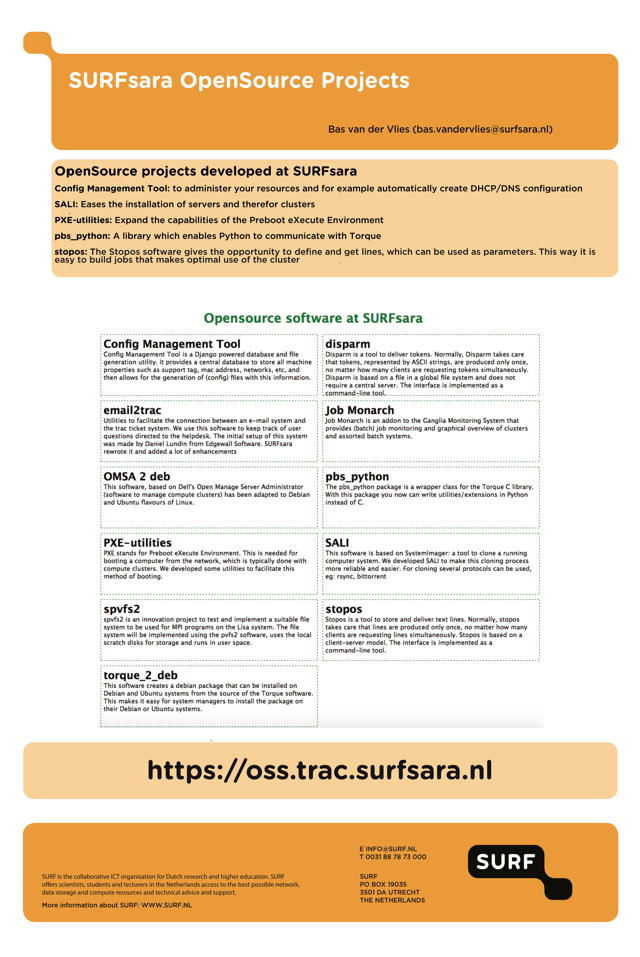
|

|
| eSciencecenter |
SCinet NRE |
SCInet SC16 network (pdf) | |
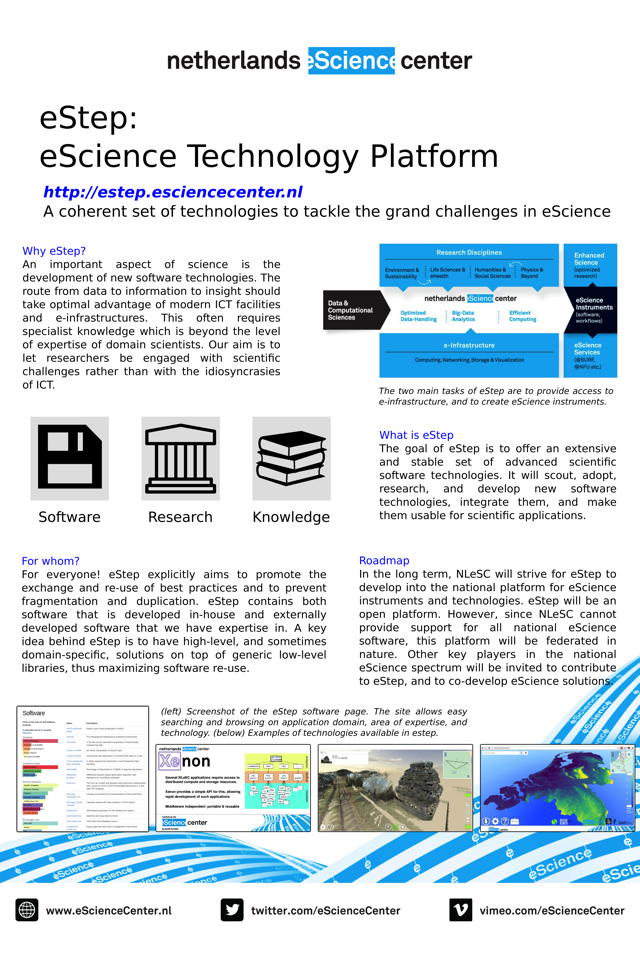
|

|
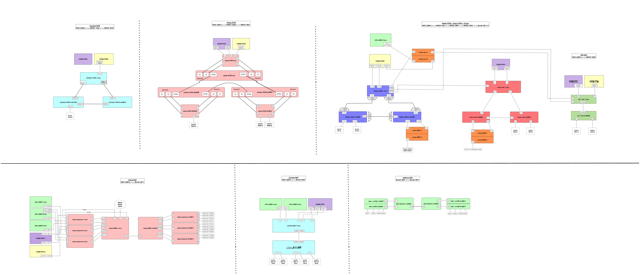 
|
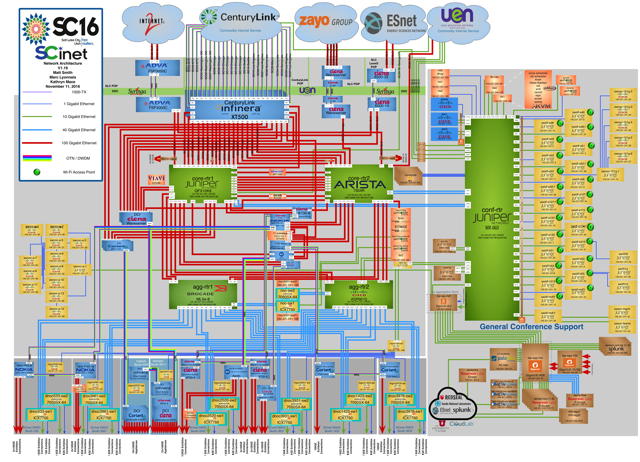 
|
Demo abstracts
|
1 |
Trusted Big Data Sharing; Researching alliances and infrastructure models across multiple autonomous organizations.Leon Gommans, Ameneh Deljoo, Ralph Koning, Ben de Graaff, Tristan Suerink, Gerben van Malenstein, Axel Berg, Erik Huizer, Rob Meijer, Tom van Engers, Cees de Laat. This effort researches the concerns many organizations have that prevents them from sharing their Big Data Assets considering the associated risks. We show how some of these concerns can be addressed by creating an alliance organizing and maintaining trust amongst members of a group that see a particular common benefit. We also consider a number of Big Data Sharing infrastructure models, implementing alliance rules using a common digital marketplace to administer and enforce them. See: slides.See: ABM Animation. |
|
2 |
Blue Planet Analytics Over 100 Gbps WANs (also in booth 2611)Gauravdeep Shami, Olivier Simard, Marc Lyonnais, Rodney Wilson.Supported by Ciena research labs, iCAIR at Northwestern University, the Electronic Visualization Laboratory at the University of Illinois at Chicago, this demo will showcase the advanced measurement and analytics capabilities that could be enabled by Ciena�s Blue Planet Analytics. See: poster. See: media advisory. |
| 3 |
Secure Autonomous Response Networks (SARNET).Ralph Koning, Ben de Graaff, Paola Grosso, Robert Meijer, Cees de Laat. This interactive demo will showcase Ciena�s joint research efforts with the Dutch Research Foundation, University of Amsterdam and other partners that explore how Software Defined Networking (SDN) and Network Function Virtualization (NFV) can help alleviate cyber-attacks and program networks to provide enhanced cyber-terror detection and defense. Attendees can see how the network is able to identify the attack origin, the type of attack and use advanced software capabilities to respond and defend autonomously.SARNET, Secure Autonomous Response NETworks, is a project funded by the Dutch Research Foundation [1]. The University of Amsterdam, TNO, KLM, and Ciena conduct research on automated methods against attacks on computer network infrastructures. By using the latest techniques in Software Defined Networking and Network Function Virtualization, a SARNET can use advanced methods to defend against cyber-attacks and return the network to its normal state. The research goal of SARNET is to obtain the knowledge to create ICT systems that: 1) model the system�s state based on the emerging behavior of its components; 2) discover by observations and reasoning if and how an attack is developing and calculate the associated risks; 3) have the knowledge to calculate the effect of countermeasures on states and their risks; 4) choose and execute the most effective countermeasure. Similar to the SC15 demonstration[2],[3], we showed an interactive touch table based demonstration that controls a Software Defined Network running on the ExoGENI infrastructure. In the SC16 demo [4] the visitor selects the attack type and its origin, the system will respond and defend against this attack autonomously. The response includes the use of security VNF's that are deployed using ExoGeni infrastructure when required for analysis or mitigation, the underlying Software Defined Network routes the attack traffic to the VNF for analysis or mitigation. The demo showed how Network Function Virtualization and Software Defined Networks can be useful in attack mitigation and how they can be used effectively in setting up autonomous responses to higher layer attacks. [1] SARNET project page: http://www.delaat.net/sarnet [2] SARNET demonstration at SC15 � http://sc.delaat.net/sc15/SARNET.html [3] R. Koning et al., �Interactive analysis of sdn-driven defence against distributed denial of service attacks,� in �2016 IEEE NetSoft Conference and Workshops (NetSoft),� (IEEE, 2016), pp. 483�488. [4] SARNET demonstration at SC16 � http://sc.delaat.net/ See: poster. See: demo video. See: demo StarNet version. See: media advisory. |
| 4 |
Real-time transformations on a 3D mesh.Casper van Leeuwen, Hans Trompert, Ronald van der Pol, Migiel de Vos, Gerben van Malenstein.During this demonstration we will show real-time transformations on a 3D mesh, initiated from the depth data of a Kinect sensor pointed towards the user in the SURF booth, in VR. In our setup the data from this sensor may flow through zero or more virtual Network Functions (NFV) and the user will experience a real-time texture transformation when applying various effects. Network functions are controlled by a LeapMotion sensor the user is wearing. Under the hood we�re using the Network Service Header to pass traffic through the Network Functions. See: poster. See: demo video. |
| 5 |
DockerMon: Bring your own container.Lukasz Makowski, Daniel Cabaca Romao, Cees de Laat, Paola Grosso.Our research on container-based remote data processing investigates the applicability of container technologies for sharing of (scientific) data. We focus in particular on the analysis of the challenges and requirements posed to the overlay networks interconnecting the containers. Scientific datasets are usually made publicly available, however, the data cannot always leave the organization premises. Moreover, on-site data processing can be challenging because of incompatibility of systems, lack of manpower or the volume of the dataset itself. We develop a proof-of-concept employing containers performing data retrieval and computation networked with VXLAN overlay. The user is given the ability to create containers equipped with the chosen set of functions. Where each function is capable of returning a different subset of information. Next, the copies of the container are concurrently executed at the different locations holding diverse datasets. The output of such execution is the data found by a particular function. Finally, the multiple results are correlated and returned to the user. Our SC16 demo is a gamification of the remote dataset processing architecture. The selection of container functions is constrained by the budget i.e. each function costs a certain amount of money. Additionally, the ability to run the created container at a selected location also requires a fee. The user picks different search functions, represented as tools, to find animals in the remote datasets. Lastly, correlating found animals according to the correlation method of choice. See poster. See: demo video. |
- mac-mini's
- usb webcams
- EvoCam -> out of business.